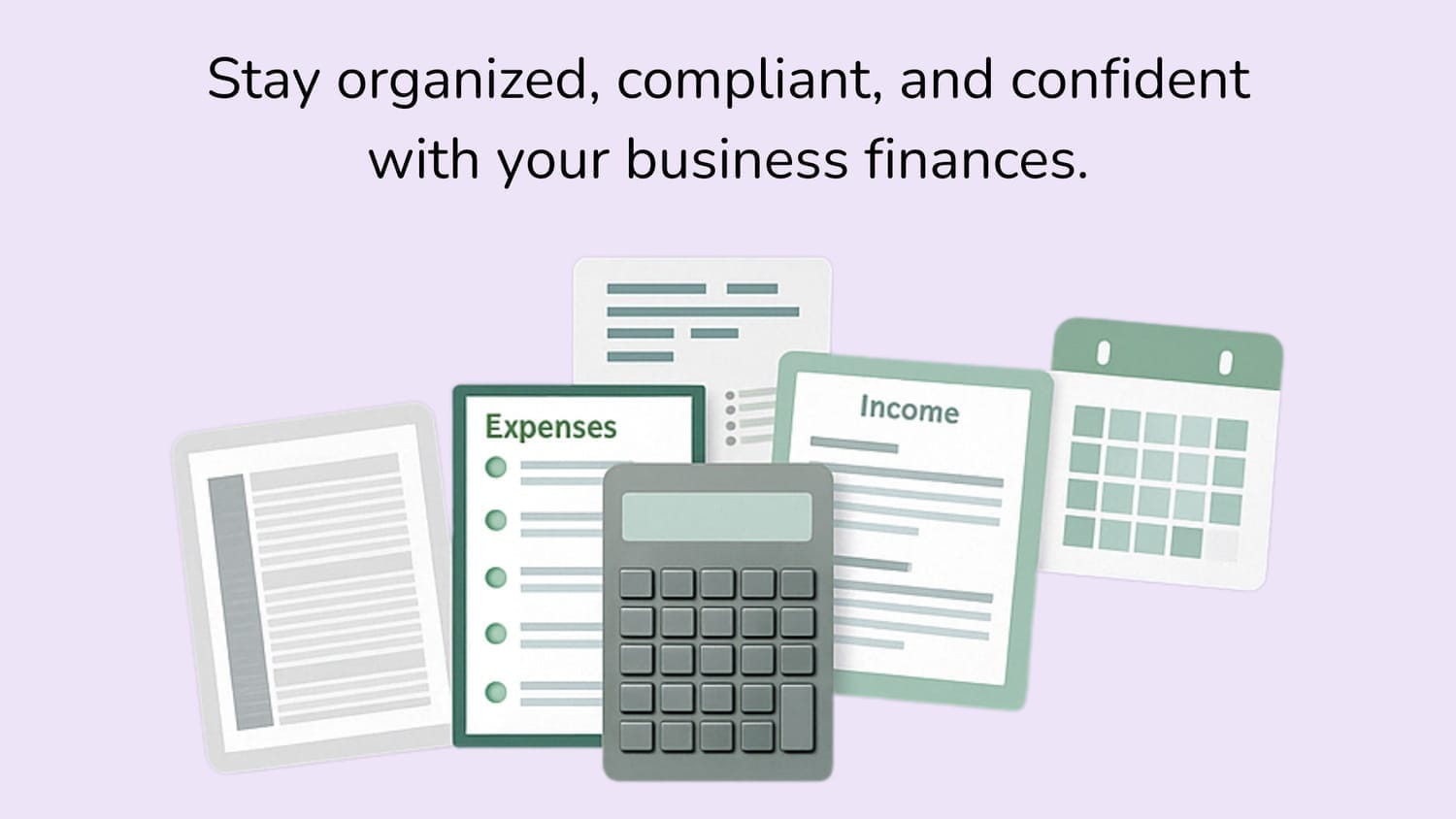What Do I Need to Keep Track of for My Small Business?

When I started out as a small business owner — running two or three different ventures online — I had no clue what I was supposed to track. Receipts were everywhere: in emails, in drawers, in file cabinets. And worse, I didn’t even know which expenses mattered and which didn’t, so I was saving everything.
I dreaded tax season. I’d ask myself:
“Am I going to get in trouble for missing something? Or am I overthinking this?”
Then, I tracked everything in a simple Excel spreadsheet I made myself. It worked — until my business started growing. That’s when I realized I needed a better system. One that gave me clarity, not stress.
Whether you're just starting out or finally getting serious about tracking your business finances, this guide will help you know exactly what to stay on top of — without drowning in details.
Why It Matters: Clear Books, Clear Business
Every financial decision you make affects your ability to grow, hire, and thrive. By consistently tracking key areas, you can:
Make smart, confident decisions
Avoid cash flow surprises
Be ready for tax season without panic
Gain clarity on your profitability
💬 Bonus for California-based business owners like me: With stricter regulations and recordkeeping expectations, it’s even more important to stay organized year-round.
What You Absolutely Need to Track
1. 💰 Income (Revenue)
Your income is everything you earn — from client payments to digital product sales.
Why it matters:
If you’re not tracking income properly, you’ll underreport taxes or misjudge how much cash you really have.
What to include:
Client invoices and payments
Affiliate earnings
Online product sales
Refunds or returns
Tip: Use one place (like QuickBooks, a spreadsheet, or accounting software) to enter income the moment it comes in.
2. 🧾 Business Expenses
Tracking expenses is essential for two reasons: lowering your tax bill and understanding your operating costs.
Common deductible expenses:
Software subscriptions (Zoom, Canva, QuickBooks)
Website hosting or domain costs
Marketing tools and ad spend
Office supplies or equipment
Contractor or freelancer payments
Reminder: Always keep receipts or digital proof for each expense.
3. 💳 Business Bank & Credit Card Transactions
Mixing personal and business accounts makes it almost impossible to stay clean and audit-ready. Make sure you’re reconciling your business accounts monthly.
What to track:
Every deposit, transfer, and withdrawal
Credit card purchases tied to business
Bank fees or interest charges
Monthly account balances
4. 📅 Recurring Subscriptions & Bills
Recurring payments can sneak up and eat away at profit. Track and review them regularly.
Track things like:
Monthly software tools
Membership sites or coaching programs
Bookkeeping or accounting software
Cloud storage or email marketing tools
Pro Tip: Cancel unused tools to cut hidden expenses.
5. 💼 Outstanding Invoices or Unpaid Bills
Unpaid invoices = cash flow delays. Missed bills = damaged credibility. Tracking both helps you stay in control.
What to monitor:
Which clients owe you money (accounts receivable)
Which vendors you owe money to (accounts payable)
Payment due dates and reminders
Past-due alerts and follow-ups
6. 📄 Tax-Related Documents
Don’t wait until tax season to get organized. Start tracking these throughout the year:
Examples:
1099s from affiliate networks or platforms
Expense receipts and mileage logs
W-9s from contractors
Quarterly estimated tax payments
Bonus: Keeping these sorted now saves hours (and stress) later.
You miss deductible expenses and overpay taxes 💸
You don’t know your real profit
You risk making decisions based on “guessing” instead of facts
You may fall behind — and catch-up bookkeeping is more expensive than regular maintenance
If you're wondering whether you need fancy accounting software or if a spreadsheet is still enough, check out my post:
👉 Do You Really Need QuickBooks?
It breaks down whether you should upgrade your tools — or stick to what’s working.
Tracking the right financial information is one of the most powerful things you can do as a business owner. The good news? You don’t need to be perfect — just consistent.
If you’re feeling behind, stuck, or overwhelmed, you’re not alone — and I can help you clean it all up with clarity and zero shame.
✅ Ready to feel in control of your business books? Book a free discovery call and let’s talk about what support looks like for you.
Build a Business Without Tech Stress
I built this entire website using Systeme.io—no coding, no headaches.
It handles my blog, emails, lead magnets, and automations all in one place.
If you're a business owner looking for a simple, all-in-one platform, this is the tool I recommend.
Best part? You can stay on the free plan and still build a beautiful, fully functional website.


